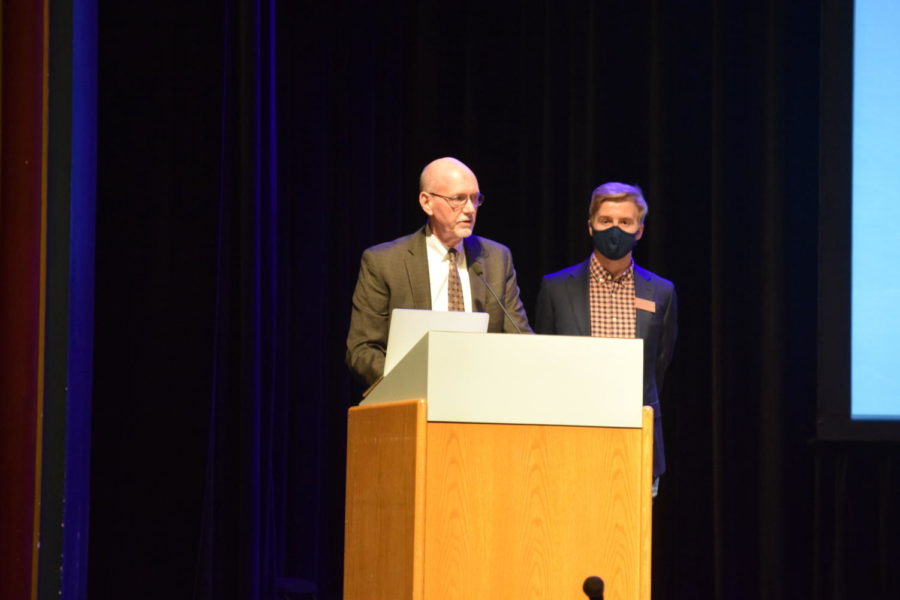Independent study finds little racial bias in traffic stops by Ames policing
Photo by Katherine Kealey/Iowa State Daily
Ames Mayor John Haila and Speaker of the Senate Dawson, a senior in political science call the joint special meeting between the Ames City Council and Iowa State Student Government to order.
February 10, 2022
An independent study examining traffic stops by the Ames and Iowa State University Police found negligible evidence of racial bias during traffic stops for both departments.
Chris Barnum with CR Research Group presented the results to the City of Ames, Iowa State University Student Government and community members Thursday night. In the years 2017-18, the study also found people of color were more likely to receive a citation than their white counterparts who were more likely to receive a warning.
The two police departments volunteered to do this study as a way to determine whether or not there were racial disparities in the way they conduct traffic stops and to become more transparent in the way they interact with the community.
In Ames in 2018, the study found that there was no difference between people of color and white drivers in receiving citations. However, in 2019, it found white people were more likely to receive a citation than people of color.
The research group measured this data by using an odds ratio which compares the odds of a group receiving a warning or citation compared to the other. The group also had observers that stood on Lincoln Way and Duff Avenue to keep track of data.
A question posed by Ames City Council Ward 2 Rep. Tim Gartin asked if police were questioning people they pulled over on what race they were or if they were assuming.
“When our observers are watching traffic, it’s merely their perception as to what the race is,” Barnum said.
Race used to be coded by the Iowa Department of Transportation into the drivers license but now it no longer requires race on drivers licenses. Ames Police Department Police Chief, Geoff Huff, said this makes it hard to keep track of race.
Iowa State University Police Department Chief Michael Newton told the Iowa State Daily he informed his command staff when they began the study but didn’t tell officers until after the data was collected. Huff said that in Ames’ case, the officers never knew because the data was taken before the study happened.
Both chiefs told the Daily they were happy with the results of the study citing it is a starting point for the departments to reach out to the communities.
“I think the one thing I’m most pleased about is this gives us another opportunity to get out to the public,” Huff said.
Newton said he sees this as a starting point to take a look at data and inform folks more.
“I think most of us think of arrest as putting the handcuffs on and taking them to jail and in over 60 percent of our cases that wasn’t the case,” Newton said.
Members of the Iowa State University Student Government were there also, including Director of Diversity, Equity and Inclusion Alyannah Buhman, a senior majoring in criminal justice.
During a Q&A session where Student Government members could ask questions to Newton and Huff, Buhman asked about why certain stops happened and both chiefs said it was time-consuming to go through and look at why stops happened.
In the future, Buhman told the Daily she hopes to see the report go more in depth as to why people are pulled over. She said she also wants to see Chief Newton continue to implement bias training to keep the disparities in traffic stops and outcomes on a downward trend.
Buhman said she saw the results as a step in the right direction towards eliminating racial disparities in policing.
“It shows promise that they are willing to keep their word and that they want to abolish these disparities,” Buhman said.







